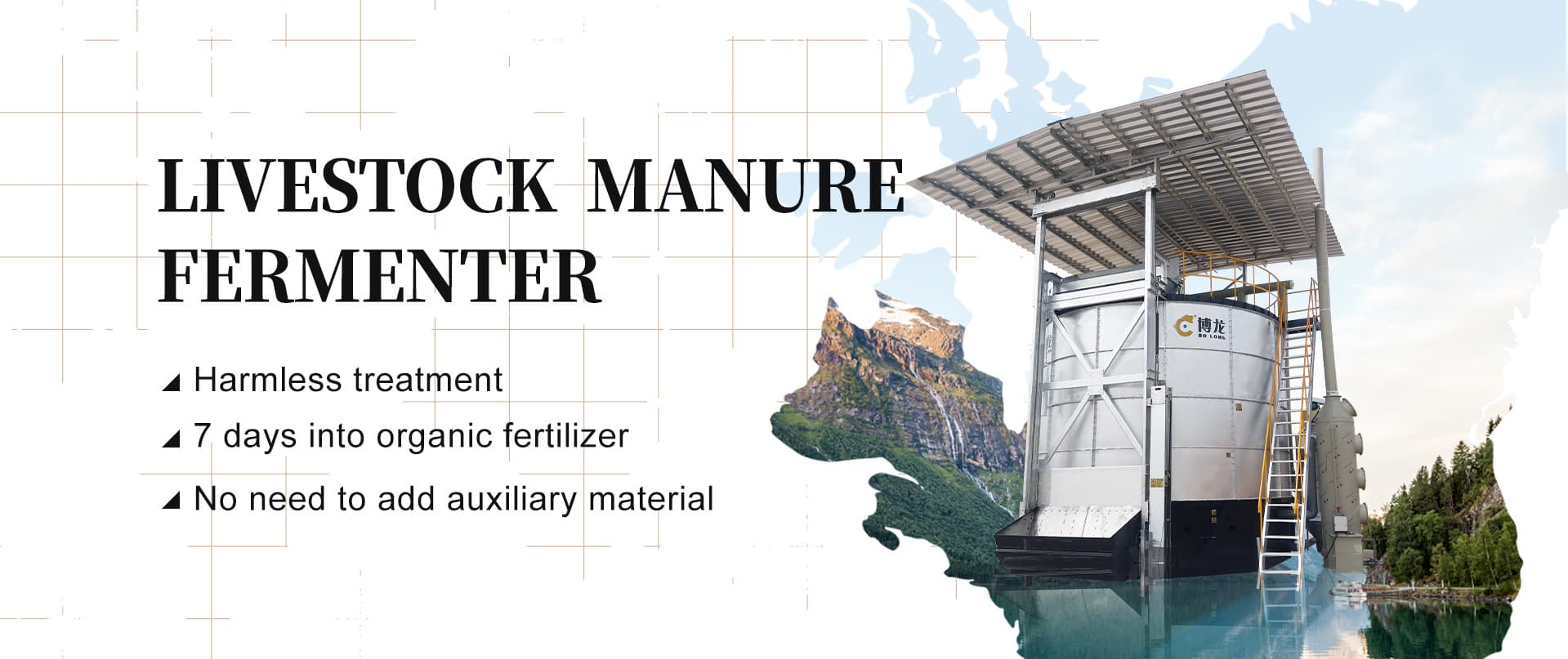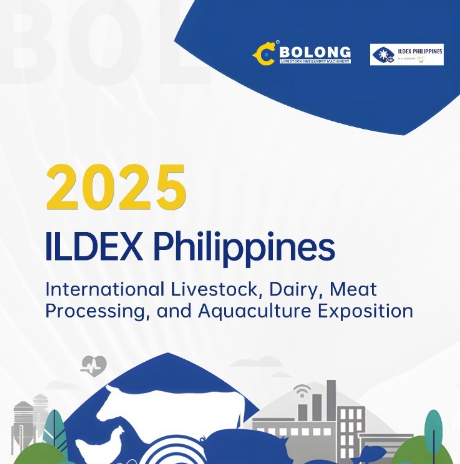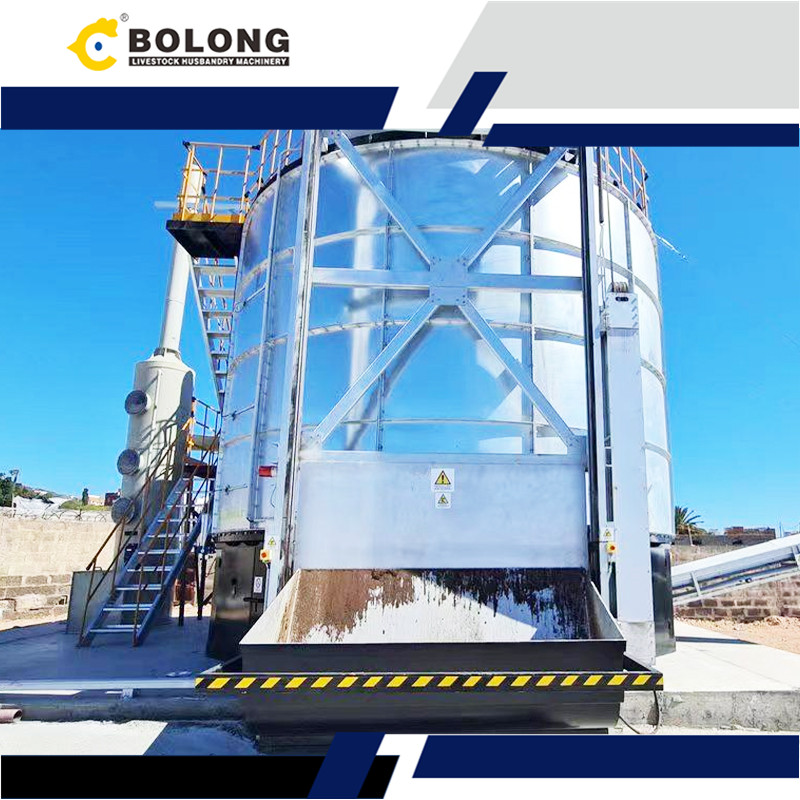The International Livestock Expo – ILDEX PHILIPPINES 2025 is set to take place from August 27–29 at the SMX Convention Center in Manila, Philippines! Henan Bolong will showcase its core equipment and livestock manure solutions at Booth No. C11.
Introduction
Fermentation tanks are vital for converting organic waste into valuable compost, but their efficiency can vary based on several factors. Improving the efficiency of fermentation tanks can lead to faster processing times, higher quality compost, and reduced operational costs. This article explores various strategies to enhance the efficiency of fermentation tanks, with a focus on Bolong’s advanced technology.

Understanding Fermentation Efficiency
Fermentation efficiency refers to the effectiveness of the tank in converting organic waste into compost. Key factors influencing efficiency include:
Waste Composition: The type and composition of organic waste can significantly impact fermentation efficiency. Mixing different types of waste can optimize nutrient balance and improve microbial activity.
Moisture Content: Maintaining the right moisture content is crucial. Ideally, the moisture content should be between 50-70%. Too much moisture can inhibit microbial activity, while too little can slow down the decomposition process.
Temperature Control: Optimal temperature ranges are essential for efficient microbial activity. Consistent temperature regulation can enhance the decomposition process.
Oxygen Supply: Adequate oxygen supply is necessary for aerobic fermentation stages. Ensuring proper aeration can improve microbial efficiency and compost quality.
Strategies to Improve Fermentation Efficiency
Optimize Waste Composition:
Mix different types of organic waste to balance nutrients and improve microbial diversity.
Pre-treat waste to break down larger particles, increasing surface area for microbial action.
Control Moisture Content:
Regularly monitor and adjust moisture levels to maintain the ideal range.
Use moisture management systems, such as drainage layers or absorbent materials, to regulate moisture.
Maintain Optimal Temperature:
Ensure proper insulation of the fermentation tank to maintain consistent internal temperatures.
Use heat exchange systems to utilize the heat generated during fermentation, reducing energy consumption.
Enhance Oxygen Supply:
Use high-pressure vortex air pumps to provide adequate oxygen for aerobic fermentation stages.
Ensure proper ventilation and avoid compacting the waste, which can restrict airflow.
Utilize Automated Control Systems:
Implement PLC control systems to automate temperature, moisture, and oxygen regulation.
Monitor fermentation parameters in real-time to make necessary adjustments and maintain optimal conditions.
Bolong Fermentation Tanks: Advanced Features for Improved Efficiency
Bolong fermentation tanks are designed with advanced features to enhance efficiency and productivity:
Automatic Loading and Discharge Systems:
Bolong tanks are equipped with automatic loading and discharge systems, streamlining the process and reducing manual labor.
High-Performance Insulation:
The tanks use high-performance insulation materials to maintain consistent internal temperatures, enhancing microbial activity and fermentation efficiency.
Advanced Heat Exchange System:
The heat exchange system utilizes the high-temperature gases produced during fermentation to preheat incoming air, improving energy efficiency and reducing operational costs.
High-Pressure Vortex Air Pumps:
These pumps provide adequate oxygen supply for aerobic fermentation stages, enhancing microbial efficiency and compost quality.
PLC Control Systems:
The PLC control systems allow for both automatic and manual operation, providing flexibility and ease of use. Real-time monitoring and adjustment of fermentation parameters ensure optimal conditions.
Case Study: Improving Efficiency with Bolong Tanks
Background: A poultry farm in Europe was facing challenges with slow fermentation and inconsistent compost quality.
Solution: The farm implemented Bolong fermentation tanks with advanced features to enhance efficiency.
Implementation:
Waste Optimization: The farm mixed chicken manure with straw to balance nutrients and improve microbial activity.
Moisture Management: Regular monitoring and adjustments were made to maintain optimal moisture levels.
Temperature Control: The high-performance insulation and heat exchange system maintained consistent temperatures.
Oxygen Supply: High-pressure vortex air pumps ensured adequate oxygen supply for aerobic fermentation stages.
Automated Control: The PLC control system automated temperature, moisture, and oxygen regulation, ensuring optimal fermentation conditions.
Result: The farm achieved faster processing times, higher quality compost, and reduced operational costs, demonstrating the effectiveness of Bolong’s advanced technology in improving fermentation efficiency.
Conclusion
Improving the efficiency of fermentation tanks involves optimizing waste composition, controlling moisture content, maintaining optimal temperatures, enhancing oxygen supply, and utilizing automated control systems. Bolong fermentation tanks, with their advanced features and robust design, offer an efficient and reliable solution for organic waste management. By implementing these strategies, users can achieve faster processing times, higher quality compost, and reduced operational costs, contributing to a more sustainable and economically viable waste management system.


The International Livestock Expo – ILDEX PHILIPPINES 2025 is set to take place from August 27–29 at the SMX Convention Center in Manila, Philippines! Henan Bolong will showcase its core equipment and livestock manure solutions at Booth No. C11.

